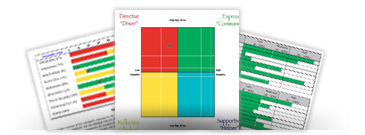Post Covid Corporate Sales Training

During the depths of the pandemic, things were changing like never before, but as things are slowly getting better, we can’t help but wonder what behaviors and trends will carry on throughout post-pandemic times.
One thing that we expect to be here to stay is virtual selling. In the pandemic, companies rapidly adopted virtual selling practices; sales teams quickly learned how to operate virtually out of desperation to survive during a global shutdown. Learning under this unique pressure isn’t really the best environment for deep comprehension and it’s definitely not a great space for creating sustainable strategies.
Now that the shock of switching to virtual selling has worn off a little bit, salespeople can take a moment to truly learn the ins-and-outs of an online sales world.
Data Analysis: Know What’s in the Details
A huge part of this learning phase includes data. Data tracking and data analysis provide a major opportunity for growth and understanding consumer behavior. Since many people are more comfortable with buying online, salespeople can better monitor buyer behavior. According to a study done by McKinsey & Company, “32% of B2B decision-makers say they would be comfortable making purchases over $50,000 through end-to-end digital self-service and remote human interactions for a new product or service” (Oram, 2021).
Therefore, a new training need emerges post-COVID, not only do salespeople need to know how to effectively sell virtually (if they don’t already) they also need to be trained on how to analyze the related data. A major opportunity is available because, “all data across the entire buyer life cycle can now be captured, analyzed and put to work,” (Oram, 2021). Metrics are now available that can show salespeople who is interested in their brand and possibly which buyers might be a better customer in the long run. Data can also provide insight to show how buyers want to participate in the buying process; how long they spend in each stage, how much communication they prefer, and how active they are online. This type of data analysis will take salespeople to the next level.
Developing Long-Term Strategies
Quickly learning how to operate in a virtual world, is like putting a bandage over something that needs stitches—it’s okay as a temporary fix, but as a long-term strategy, it will not suffice. Now that the virtualization of sales is here to stay, the development of long-term measures is crucial.
After the pandemic, sales teams should carefully create structured plans around virtual selling, the plans should ultimately answer the questions of:
- What does virtual selling look like for my team/company/industry now and in the future?
- How will we reach the desired sales goals using technology to our advantage?
- What new policies and practices need to be implemented into the workplace in order to achieve these new goals?
In answering these questions, sales training definitely offers a helping hand. Sales training post-COVID can aid sales professionals in their quest to stay updated on technological advancements—being trained on the best technologies for selling, presenting, and connecting to others can really give you a leg up on the competition. Sales training can also be beneficial in helping managers navigate their roles. Managers can learn the new management techniques that come with managing a fully virtual team or a partially virtual team.
Salespeople should always stay alert so they are able to effectively adapt and learn throughout industry changes. Post-COVID selling might not look like times before COVID, but with the proper training, salespeople will be ready for success.



